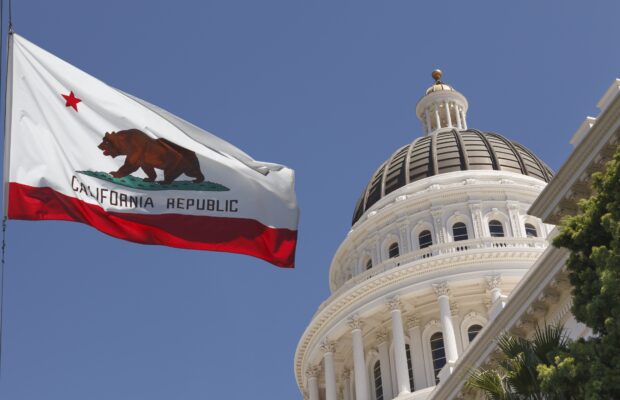On April 20, 2022, the Bay Area Air Quality Management District (BAAQMD) adopted new recommended thresholds for determining the significance of individual projects’ greenhouse gas impacts under the California Environmental Quality Act (CEQA).
Fifteen years after the Legislature amended the California Environmental Quality Act (CEQA) to require consideration of individual project contributions to global climate change, many lead agencies continue to struggle to establish defensible thresholds of significance for these impacts, so these thresholds may be welcome news. However, it is up to local agencies to decide whether to embrace the new guidance, and some may favor standards to meet their particular circumstances rather than relying on the recommended “one size fits all” approach.
Background
BAAQMD’s update to its greenhouse gas thresholds is the first since the thresholds were adopted in 2010. The prior thresholds recommended that all greenhouse gas emissions from a project should be calculated and compared to quantified screening criteria to determine significance. Alternatively, if a lead agency had adopted a “qualified GHG Reduction Strategy” under CEQA Guidelines section 15183.5, then a project would be presumed to have a less-than-significant greenhouse gas impact if it was found to be consistent with that strategy.
The latter approach – determining significance based on consistency with a qualified greenhouse gas reduction strategy – has been upheld in the Court of Appeal (see Mission Bay Alliance v. Office of Community Investment and Infrastructure (6 Cal. App. 5th 160 (2016)), concerning development of the Golden State Warriors arena in San Francisco). However, the alternate approach of comparing emissions to a quantified threshold has been called into question over time through a series of published court opinions. In part, this is because the previously recommended screening criteria were based on achieving the statewide greenhouse gas reduction goals under Assembly Bill 32 (2006), and did not reflect the more aggressive reductions later adopted by Senate Bill 32 (2016).
New Recommended Thresholds
Under the new thresholds, proposed land use projects could still be analyzed for consistency with a qualified greenhouse gas reduction strategy, if one has been adopted. If no such plan has been adopted, then BAAQMD recommends that a land use project must include specified minimum design elements to ensure that the project is contributing its “fair share” toward achieving the state’s key climate goal: carbon neutrality by 2045.
Specifically, for buildings, the project must not:
- Include natural gas appliances or natural gas plumbing (in both residential and nonresidential development); and
- Result in any wasteful, inefficient, or unnecessary electrical usage as determined by the analysis required under CEQA section 21100(b)(3) and CEQA Guidelines section 15126.2(b). In other words, the project’s CEQA document must conclude that the project will have less than significant impacts relating to electricity use.
For transportation, the project must:
- Achieve compliance with electric vehicle requirements in the most recently adopted version of CALGreen Tier 2, and
- Achieve a reduction in project-generated vehicle miles traveled (VMT) below the regional average consistent with the current version of the California Climate Change Scoping Plan (currently 15 percent) or meet a locally adopted Senate Bill 743 VMT target reflecting the following recommendations:
- Residential projects: 15 percent below the existing VMT per capita;
- Office projects: 15 percent below the existing VMT per employee; or
- Retail projects: no net increase in existing VMT.
Additionally, BAAQMD adopted thresholds for local governments to use when adopting long-range plans, such as General Plans: Such plans must either be consistent with qualified greenhouse gas reduction strategy, or demonstrate that they will meet the state’s goals to reduce emissions 40% below 1990 levels by 2030, and achieve carbon neutrality by 2045.
Limitations and Considerations
For lead agencies that do not currently have qualified reduction strategies, the new thresholds may provide a welcome framework to address greenhouse gas emissions in CEQA documents, but they are unlikely to satisfy all stakeholders. For example, some commenters have raised concerns that particular uses cannot effectively avoid using natural gas; that rural communities will have challenges meeting the transportation-related criteria; and that the thresholds will not be appropriate for all types of land uses (such as projects involving “stationary source” emissions).
BAAQMD staff have indicated that the thresholds may incentivize local governments to create their own qualified greenhouse gas reduction strategies, which may allow for more flexibility to assess impacts and apply mitigation measures to address areas of local concern. BAAQMD’s website explains that the agency “does not approve or ‘certify’ projects or plans for consistency with the State CEQA Guidelines,” but that it is developing additional guidance on how to ensure that a greenhouse gas reduction plan “is robust enough to meet the State’s climate goals.”
We will continue to monitor BAAQMD’s development of CEQA guidance and local agency responses, and will provide updates when available.



